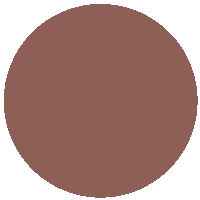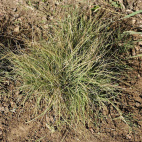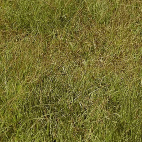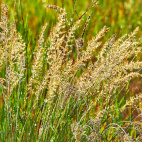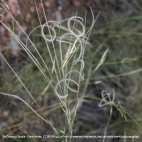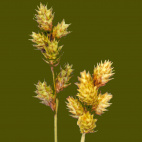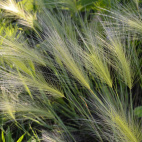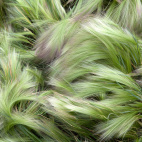Color
Availability
USDA Zone
Region
Type
Duration
Season
Germination
Soil
Sunlight
Height
Narrow Your Search
Color
Availability
USDA Zone
Region
Type
Duration
Season
Germination
Soil
Sunlight
Height
US Native Grass Seeds
The species on this page are not all technically classified as grasses, but the average gardener would probably call them "grass". Here you will find a variety of seeds of native grasses, sedges, reeds, and rushes. You might not think of grass as being as beautiful as flowers, but some of these wild grasses really are beautiful in their own way. Many of the native prairie grasses turn color in autumn, and the rusty bronze color of the stems adds a real fall aura to the planting. Winter birds benefit from the wild grass seeds, and small animals use the thick undergrowth for cover. The biomass of the grass is also the primary source for fuel when a prairie planting undergoes a planned burn.
-
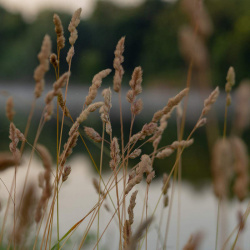 On Sale!
Brown Fox Sedge Seeds
Carex vulpinoidea
With seedheads resembling bushy fox tails, this native sedge is one of the most common members of the Sedge family. It is highly adaptable to either sun or shade and is often seen growing over large marshy areas.Quick Viewx
On Sale!
Brown Fox Sedge Seeds
Carex vulpinoidea
With seedheads resembling bushy fox tails, this native sedge is one of the most common members of the Sedge family. It is highly adaptable to either sun or shade and is often seen growing over large marshy areas.Quick ViewxBrown Fox Sedge Seeds
Carex vulpinoidea
With seedheads resembling bushy fox tails, this native sedge is one of the most common members of the Sedge family. It is highly adaptable to either sun or shade and is often seen growing over large marshy areas.
$3.25 Pkt - $11.03 / Oz -
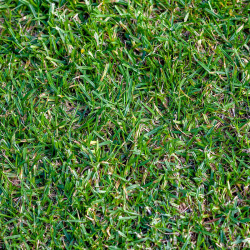 Buffalo Grass Seeds
Buchloe dactyloides
Most native grasses form large clumps, which do not work very well for mowing. Buffalo Grass spreads out more evenly like a turfgrass and is quite popular for those who want a native lawn that is resistant to drought and heat.Quick View$3.48 Pkt - $8.46 / Oz
Buffalo Grass Seeds
Buchloe dactyloides
Most native grasses form large clumps, which do not work very well for mowing. Buffalo Grass spreads out more evenly like a turfgrass and is quite popular for those who want a native lawn that is resistant to drought and heat.Quick View$3.48 Pkt - $8.46 / Oz -
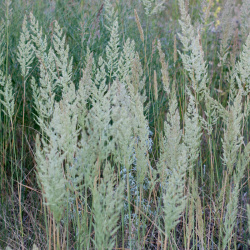 On Sale!
June Grass Seeds
Koeleria cristata
This perennial grass performs well in native plantings that have dry soil. It is a cool-season grass, so it greens up sooner than many of the other prairie grasses. Resistant to both heat and cold, the grass sends up showy seed heads which remain until fall.Quick View$3.48 Pkt - $15.95 / Oz
On Sale!
June Grass Seeds
Koeleria cristata
This perennial grass performs well in native plantings that have dry soil. It is a cool-season grass, so it greens up sooner than many of the other prairie grasses. Resistant to both heat and cold, the grass sends up showy seed heads which remain until fall.Quick View$3.48 Pkt - $15.95 / Oz -
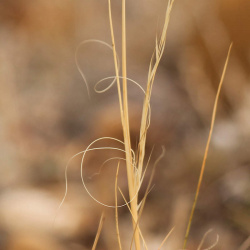 On Sale!
Needle And Thread Grass Seeds
Stipa comata
This perennial bunchgrass produces this unique Stipa Comata Plant that are very sharp on one end and have a long tail on the other end. It grows on the dry soils of the American West, and has excellent drought resistance, but does most of it's growing during the cool seasons.Quick Viewx
On Sale!
Needle And Thread Grass Seeds
Stipa comata
This perennial bunchgrass produces this unique Stipa Comata Plant that are very sharp on one end and have a long tail on the other end. It grows on the dry soils of the American West, and has excellent drought resistance, but does most of it's growing during the cool seasons.Quick ViewxNeedle And Thread Grass Seeds
Stipa comata
This perennial bunchgrass produces this unique Stipa Comata Plant that are very sharp on one end and have a long tail on the other end. It grows on the dry soils of the American West, and has excellent drought resistance, but does most of it's growing during the cool seasons.
$3.48 Pkt - $15.95 / Oz -
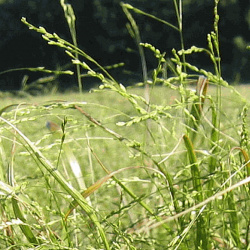 Nodding Fescue Seeds
Festuca obtusa
This native cool-season perennial has fine grass leaves that are bright green and develops fine seed heads that ripen to a yellow color in the summer. It prefers some shade but can tolerate full sun if given enough moisture.Quick View$3.48 Pkt - $48.00 / Oz
Nodding Fescue Seeds
Festuca obtusa
This native cool-season perennial has fine grass leaves that are bright green and develops fine seed heads that ripen to a yellow color in the summer. It prefers some shade but can tolerate full sun if given enough moisture.Quick View$3.48 Pkt - $48.00 / Oz -
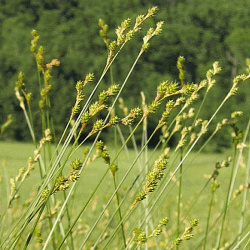 On Sale!
Plains Oval Sedge Seeds
Carex brevior
This highly adaptable sedge grows tufted bristly seed heads that form during the spring and mature in the summer. This native perennial does well in dry soils but can adapt to wet areas as well, so it is used in a wide variety of native seed mixes.Quick View$3.48 Pkt - $14.49 / Oz
On Sale!
Plains Oval Sedge Seeds
Carex brevior
This highly adaptable sedge grows tufted bristly seed heads that form during the spring and mature in the summer. This native perennial does well in dry soils but can adapt to wet areas as well, so it is used in a wide variety of native seed mixes.Quick View$3.48 Pkt - $14.49 / Oz -
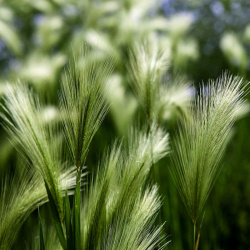 Squirrel Tail Grass Seeds
Hordeum jubatum
It is easy to see how this strikingly beautiful native was named - the seed heads look like little squirrel tails! This small perennial is a cool-season grass and does not grow very tall on the sunny dry soils which it loves.Quick View$3.48 Pkt - $30.00 / Oz
Squirrel Tail Grass Seeds
Hordeum jubatum
It is easy to see how this strikingly beautiful native was named - the seed heads look like little squirrel tails! This small perennial is a cool-season grass and does not grow very tall on the sunny dry soils which it loves.Quick View$3.48 Pkt - $30.00 / Oz
The species on this page are not all technically classified as grasses, but the average gardener would probably call them "grass". Here you will find a variety of seeds of native grasses, sedges, reeds, and rushes. You might not think of grass as being as beautiful as flowers, but some of these wild grasses really are beautiful in their own way. Many of the native prairie grasses turn color in autumn, and the rusty bronze color of the stems adds a real fall aura to the planting. Winter birds benefit from the wild grass seeds, and small animals use the thick undergrowth for cover. The biomass of the grass is also the primary source for fuel when a prairie planting undergoes a planned burn.
